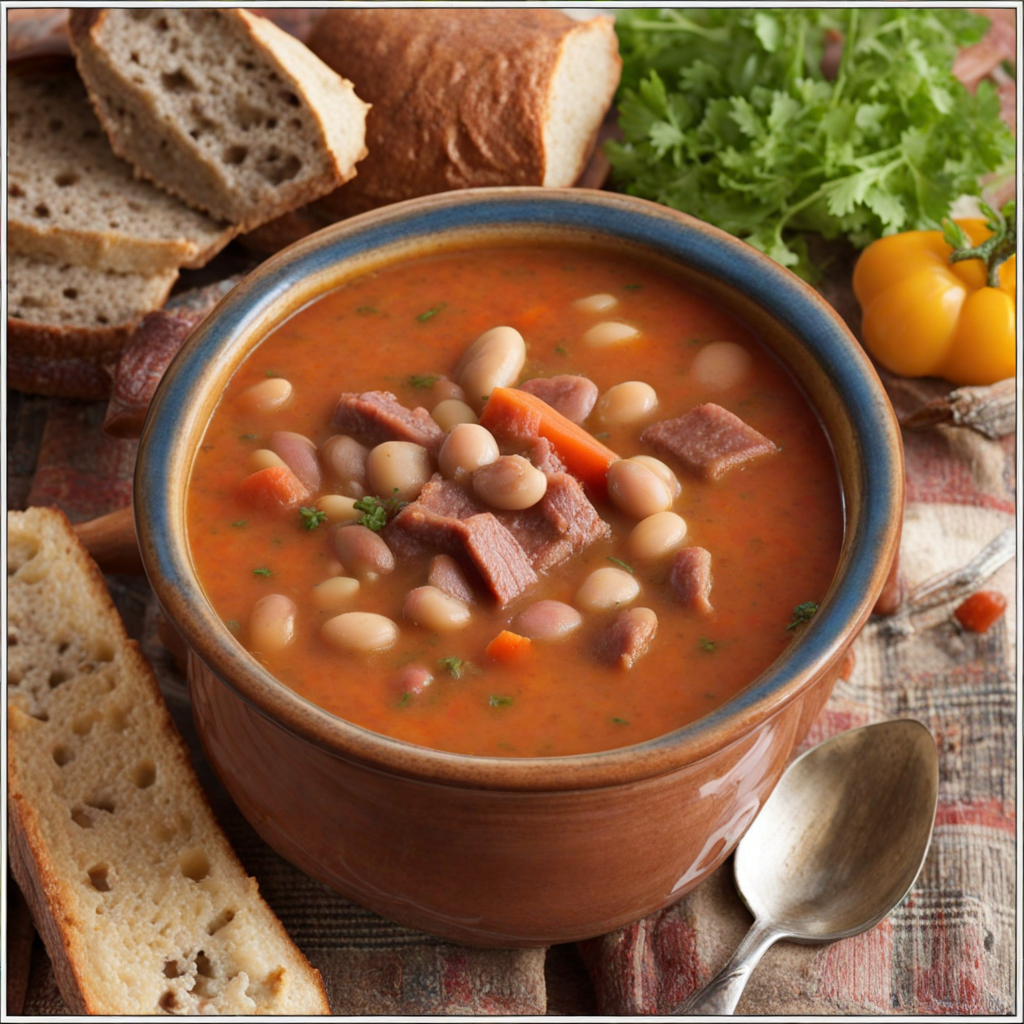Bacon-wrapped Prunes
Bacon-wrapped prunes are a delightful culinary creation that showcases the unique blend of sweet and savory flavors, rooted in Hungarian cuisine. This dish features plump, juicy prunes that are carefully wrapped in crispy, smoky bacon, creating a harmonious balance between the rich, saltiness of the bacon and the natural sweetness of the dried fruit. The contrast in textures—crispy on the outside and tender on the inside—offers a satisfying bite that is both intriguing and comforting. Each bite is a burst of flavor, with the bacon lending its umami richness to the sweet, caramelized notes of the prunes, resulting in a taste experience that is truly unforgettable. In Hungary, this dish is often served as an appetizer or a finger food at gatherings and celebrations. It embodies the traditional Hungarian love for bold flavors and inventive combinations, making it a popular choice for both locals and visitors seeking a taste of authentic Hungarian fare. The preparation is simple yet effective, as the bacon is typically baked or grilled until perfectly crispy, allowing the prunes to warm through and slightly caramelize, enhancing their natural sweetness and adding depth to the overall flavor profile. Bacon-wrapped prunes can be enjoyed on their own or paired with a variety of dips or spreads. The dish can also be elevated by adding a sprinkle of crushed nuts or a drizzle of honey for an extra layer of flavor. This fusion of sweet and salty makes it an excellent addition to charcuterie boards, holiday spreads, or casual get-togethers, inviting everyone to indulge in a taste that is both familiar and refreshingly unique. Whether you are a longtime fan of traditional Hungarian dishes or a curious foodie looking to explore new tastes, bacon-wrapped prunes are a must-try that promises to excite your palate.
How It Became This Dish
Szilvásgombóc: A Sweet Slice of Hungarian Tradition Szilvásgombóc, a beloved Hungarian dessert, is a delightful dumpling filled with plump, sweet plums and often dusted with sugar and served with a generous sprinkling of breadcrumbs or a drizzle of cream. Its name, which translates to "plum dumpling," encapsulates the essence of this dish: simple ingredients transformed into a decadent treat. The history of Szilvásgombóc is a rich tapestry woven with threads of agriculture, cultural exchanges, and regional pride, reflecting the heart and soul of Hungarian culinary traditions. Origins of Szilvásgombóc The origins of Szilvásgombóc can be traced back to the 19th century, particularly in the region of Hungary known as Szeged, though variations of fruit-filled dumplings can be found across Central and Eastern Europe. The foundations of this dish lie in the agricultural abundance of the region. Hungary is blessed with fertile soil and a climate conducive to growing various fruits, including the sweet, juicy plums that are central to this dish. The introduction of potato in the late 18th century revolutionized Hungarian cooking, providing a starchy base for dumplings that would become staples in Hungarian cuisine. Dumplings have a long-standing tradition in Hungarian cooking, influenced by neighboring cuisines such as German, Austrian, and Slavic. The concept of stuffing dumplings with fruit is not unique to Hungary; however, the Hungarian approach emphasizes local flavors and ingredients. Szilvásgombóc is traditionally made using a dough that incorporates potatoes and flour, resulting in a soft and pliable texture that complements the juicy plums. Cultural Significance Szilvásgombóc is more than just a dessert; it holds an essential place in Hungarian culture and family traditions. Often served at family gatherings, holidays, and special occasions, this dish embodies the spirit of togetherness. The preparation of Szilvásgombóc can be a communal activity, with family members gathering in the kitchen to roll out the dough, fill it with plums, and boil the dumplings. This ritual fosters bonds and creates memories, as generations pass down the recipes and techniques. In Hungary, plums have been a significant fruit since ancient times, appearing in folklore and traditional medicine. They symbolize fertility and abundance, making them a fitting centerpiece for a dish that celebrates family and togetherness. The cultural significance of Szilvásgombóc extends beyond its ingredients; it represents the rich agricultural heritage of Hungary and the importance of seasonal produce. Development Over Time Throughout the 20th century, Szilvásgombóc evolved alongside Hungary's social and economic changes. The rise of urbanization led to a shift in culinary practices. While rural families continued to prepare Szilvásgombóc using traditional methods, urban dwellers sought convenience. As a result, variations of the dish emerged, including faster, less labor-intensive recipes that substituted fresh plums with canned or frozen ones. The dish's popularity soared during the communist era, in the mid-20th century, as it became a symbol of comfort food for many Hungarians. Szilvásgombóc was often featured in school canteens and family restaurants, further embedding it in the collective culinary memory of the nation. Chefs and home cooks began to experiment with presentation and accompaniments, leading to a variety of serving styles. Some would serve the dumplings with a rich poppy seed sauce or a sprinkle of cinnamon, while others preferred a simple dusting of powdered sugar. As Hungary transitioned to a market economy in the 1990s, Szilvásgombóc experienced a renaissance. Chefs started to reintroduce traditional flavors and cooking methods, emphasizing local ingredients and artisanal approaches. This revival sparked interest in Hungary's culinary heritage, and Szilvásgombóc was embraced as a symbol of national identity. Food festivals, culinary competitions, and cooking classes began to celebrate this dish, showcasing regional interpretations and innovations. Szilvásgombóc Today In contemporary Hungary, Szilvásgombóc remains a cherished dessert, often found on the menu of traditional restaurants and at festive gatherings. The dish has gained international attention, with Hungarian expatriates and food enthusiasts introducing it to culinary scenes around the world. The rise of social media has facilitated this sharing, allowing for the vibrant imagery and stories surrounding Szilvásgombóc to reach a global audience. While the traditional recipe remains a staple, modern interpretations continue to emerge. Some chefs incorporate alternative flours, such as spelt or gluten-free blends, catering to dietary preferences while retaining the essence of the dish. Others experiment with flavor pairings, introducing spices or additional fruits to complement the plums, thereby creating a fusion of tastes that honor the heritage of Szilvásgombóc while embracing contemporary culinary trends. Conclusion Szilvásgombóc is a sweet testament to Hungary's rich agricultural heritage and culinary tradition. From its humble beginnings as a simple fruit dumpling to its status as a beloved national dish, it reflects the evolving nature of Hungarian cuisine. The dumpling serves not only as a delicious dessert but also as a cultural symbol of family, community, and the celebration of seasonal ingredients. As Hungary continues to navigate the complexities of the modern world, Szilvásgombóc remains a cherished reminder of a time-honored tradition, bringing people together around the dinner table, one dumpling at a time.
You may like
Discover local flavors from Hungary







